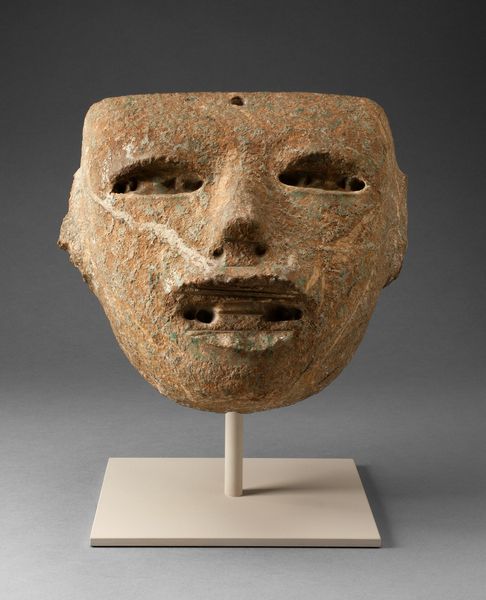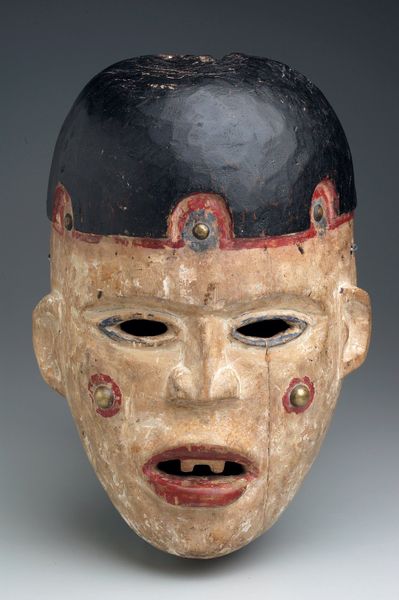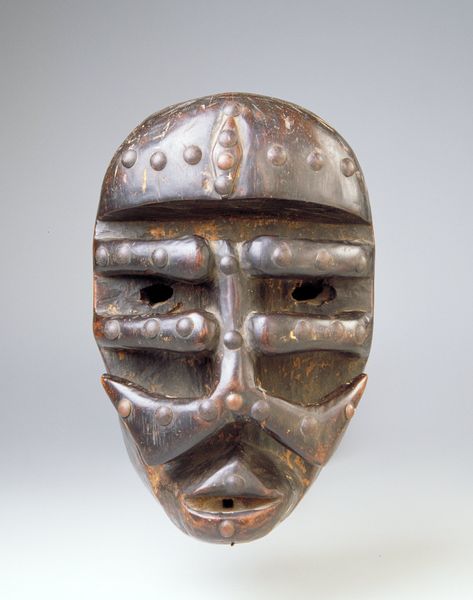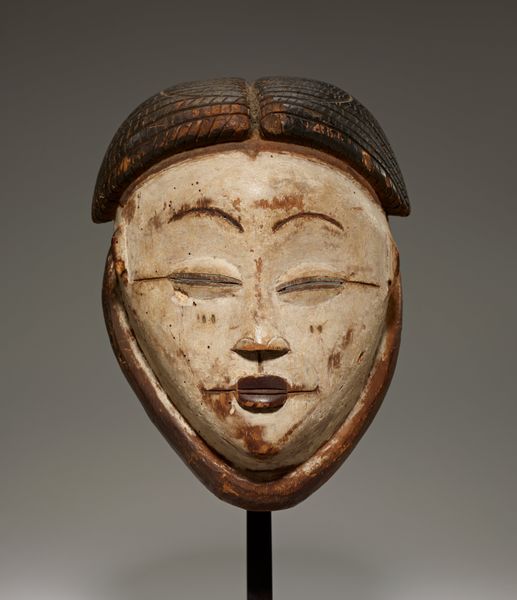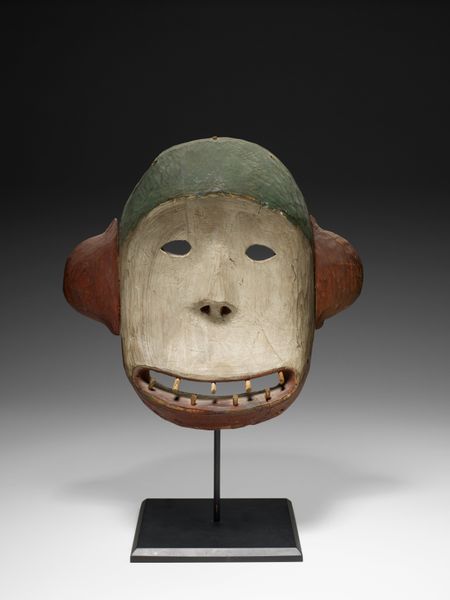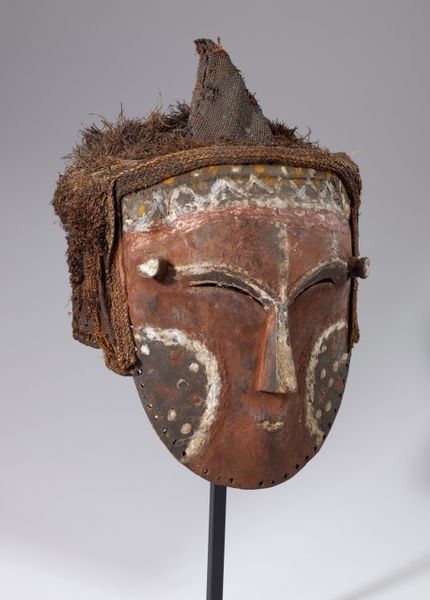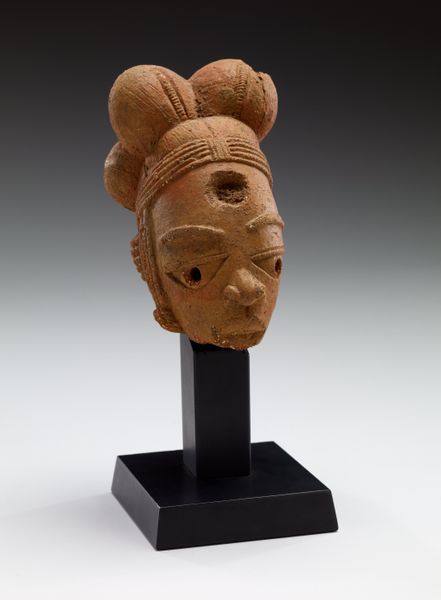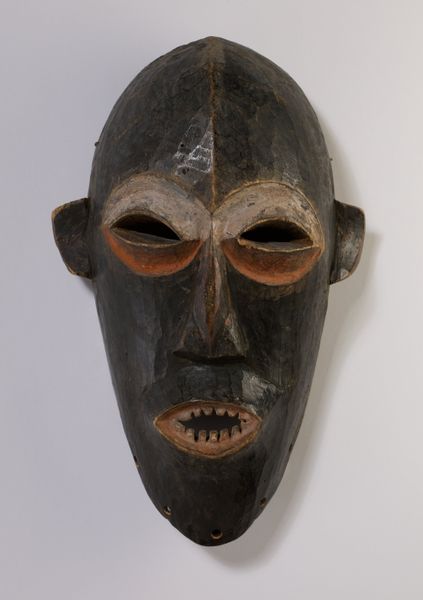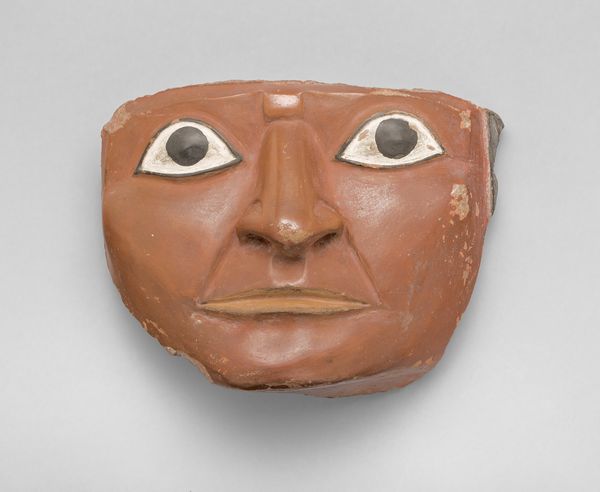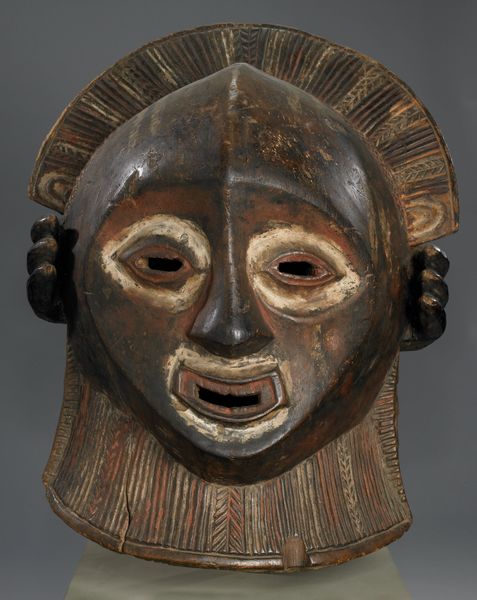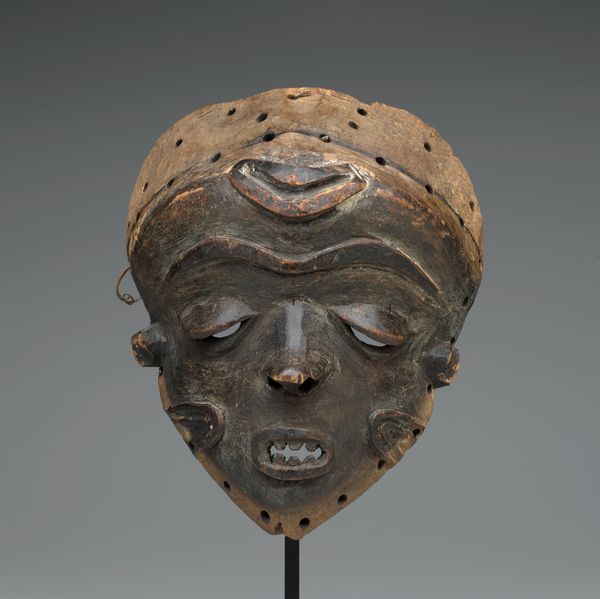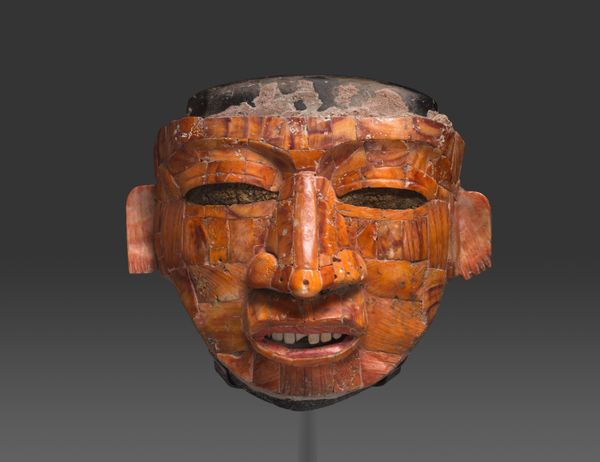
carving, sculpture
#
portrait
#
carving
#
figuration
#
form
#
sculpture
#
indigenous-americas
Dimensions: 6 7/8 x 5 9/16 x 3 1/4 in. (17.46 x 14.13 x 8.26 cm)
Copyright: Public Domain
Curator: Immediately, the stark emptiness of the eye sockets draws you in. Is that unsettling or does it invite contemplation? Editor: Both, perhaps. There’s an undeniable power in that gaze, even without eyes. We are looking at a mask, an Olmec artifact, believed to have been created around the year 900 and currently held at the Minneapolis Institute of Art. What's your perspective? Curator: This mask certainly confronts prevailing assumptions, as well as societal expectations concerning identity, representation, and the legacies of colonial narratives in shaping interpretations of ancient indigenous artifacts. This object raises profound questions concerning race, power, and artistic legacy. Editor: Yes, and look at the physical reality of this sculpture; what raw material, what social relations underpinned its production? Made from stone, undoubtedly carved with great skill, but we're missing crucial information concerning who had access to these materials, what labor hierarchies enabled such a creation? Curator: Absolutely. The incised lines all over the face read as power dynamics; how societal structure is mapped on the mask. Each mark suggests a story, whether it's ancestral lineage or ritual importance. The mask acts as a mediator for political power. Editor: Thinking about craft and labor again, each careful carve must have demanded a certain degree of specialist skill; the work represents someone's investment of time. What form of patronage underpinned such production? Curator: Thinking beyond skill, beyond materiality, the face invites conversation. It questions assumptions embedded in how we present history and understand art of this period. Editor: I agree it encourages questioning. We need more exploration around Olmec visuality, particularly in understanding how its artistic methods and forms intersect with broader global cultural patterns. Curator: And, this artwork emphasizes the critical value of recognizing multifaceted understandings around art and identity and the deconstruction of preconceived notions of gender and heritage. Editor: True. Perhaps more exploration will throw light on that inscrutable, though quite magnificently worked, visage.
Comments
minneapolisinstituteofart almost 2 years ago
⋮
This mask was created about 3000 years ago, perhaps as a portrait of a leader among the Olmec people of Mesoamerica (present-day southern Mexico). It was likely reserved for ceremonial use. An artist sculpted it from jadeite, then carved lines and highlighted them with a red mineral powder of mercury sulfide (cinnabar). These lines may replicate face paint or tattooing. The rare materials and symbolic designs, like the supernatural human-jaguar whose face hovers above the right eye, reflect the ruler's religious and political power.
Join the conversation
Join millions of artists and users on Artera today and experience the ultimate creative platform.
